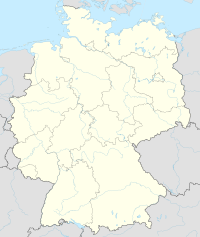Fuhlsbüttel Airport
|
Hamburg Airport Flughafen Hamburg |
|||||||||||||||
|---|---|---|---|---|---|---|---|---|---|---|---|---|---|---|---|
 |
|||||||||||||||
 |
|||||||||||||||
| Summary | |||||||||||||||
| Airport type | Public | ||||||||||||||
| Owner | City of Hamburg (51%) AviAlliance (49%) |
||||||||||||||
| Operator | Flughafen Hamburg GmbH | ||||||||||||||
| Serves | Hamburg, Germany | ||||||||||||||
| Hub for | |||||||||||||||
| Focus city for | |||||||||||||||
| Built | 1911 | ||||||||||||||
| Elevation AMSL | 53 ft / 16 m | ||||||||||||||
| Coordinates | 53°37′49″N 009°59′28″E / 53.63028°N 9.99111°ECoordinates: 53°37′49″N 009°59′28″E / 53.63028°N 9.99111°E | ||||||||||||||
| Website | airport.de | ||||||||||||||
| Map | |||||||||||||||
| Location of Hamburg Airport | |||||||||||||||
| Runways | |||||||||||||||
|
|||||||||||||||
| Statistics (2016) | |||||||||||||||
|
|||||||||||||||
| Passengers | 16,223,968 |
|---|---|
| Passenger change 15–16 |
|
| Aircraft movements | 160,904 |
| Movements change 15–16 |
|
Hamburg Airport (IATA: HAM, ICAO: EDDH), known in German as Flughafen Hamburg, is the international airport of Hamburg, the second-largest city in Germany. It is located 8.5 km (5.3 mi) north of the city center in the Fuhlsbüttel quarter and serves as a base for Germanwings, Condor and easyJet. Hamburg Airport is the fifth-busiest of Germany's commercial airports measured by the number of passengers and counted 16,223,968 passengers and 160,904 aircraft movements in 2016 and is named after Helmut Schmidt. As of July 2017, it featured flights to more than 130 destinations of which four are long-haul routes to Dubai, Newark, Tabriz and Tehran.
The airport is not to be confused with the nearby private Hamburg Finkenwerder Airport, where the Airbus factory site is located.
The airport was opened in January 1911 from private funding by the Hamburger Luftschiffhallen GmbH (HLG), making it the oldest airport in the world which is still in operation. The original site comprised 45 hectares and was primarily used for airship flights in its early days. In 1913, the site was expanded to 60 hectares, the northern part being used for airship operations, while the southeast area was used for fixed-wing aircraft.
During the First World War, the airship hangar was used extensively by the military, until it was destroyed by fire in 1916.
...
Wikipedia


